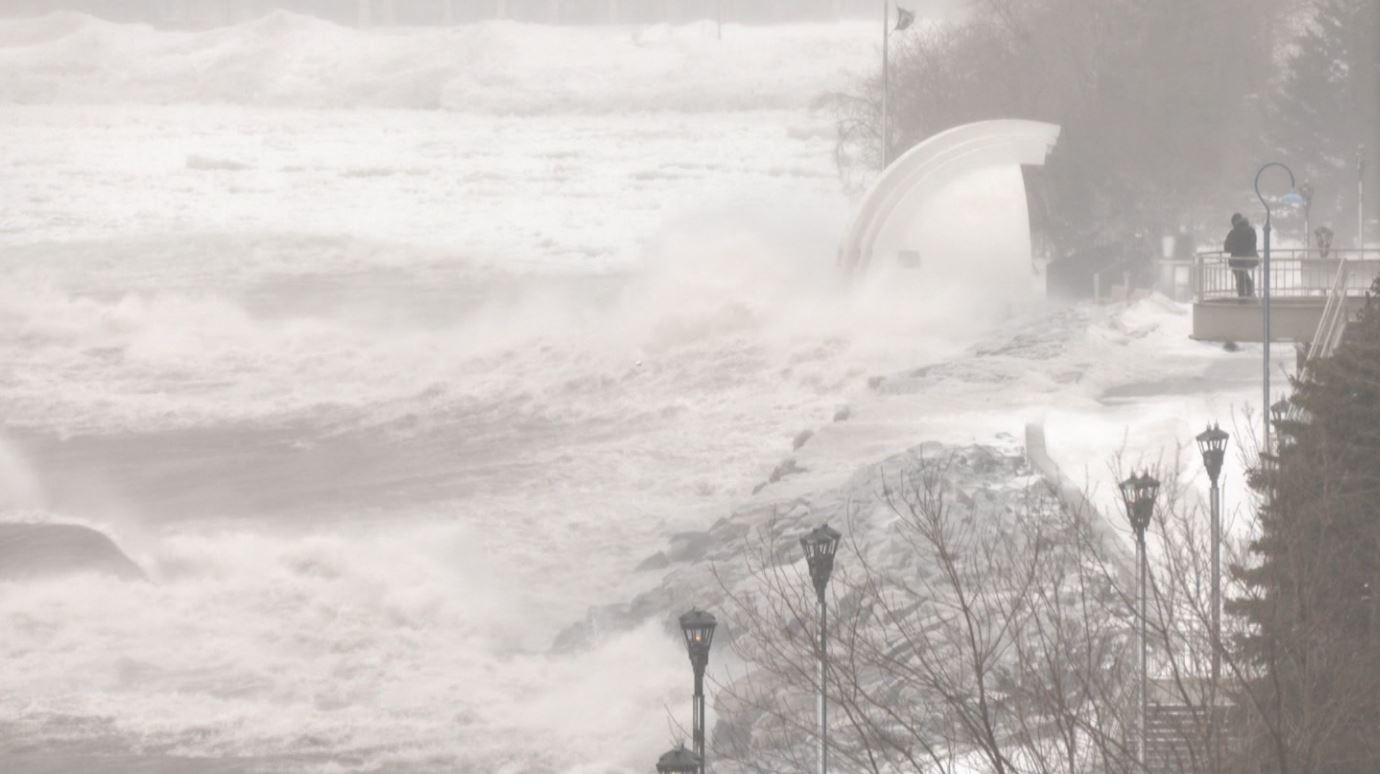The power in Lake Superior’s waves
[anvplayer video=”5171241″ station=”998130″]
Huge waves rolling in off Lake Superior Tuesday were enthralling. And there’s a lot of power in those waves.
Craig Hill, an assistant professor in the Mechanical and Industrial Engineering Department at UMD, has a background in marine renewable energy.
“Here at UMD, I’m really trying to engage a lot of our students in this … new field of renewable energy, getting them excited about waves and thinking about technology that can harness some of that power from those waves,” Hill said. “And I think anyone here in Duluth, you get a sense of how much power actually is in a wave when you see them crashing up over the pier down in Canal Park.”
He said forecasts predicted 10- to 20-foot waves on Lake Superior. Because there aren’t buoys on the lake in the winter, scientists don’t have real-time measurements. But as Hill watched huge ice chunks get tossed over the pier, it got him thinking about how powerful they are.
“One way I like to convey how much power is in those waves is think about stretching your arms out as wide as you can. And our armspan is, you know, 5-6 feet long,” Hill said. “And the way we quantify how much power is in the waves, it takes into account the the wave height but also how frequently they’re passing by you. And so for example, those 10-foot waves that were crashing in Canal Park kind of late afternoon, around dinner time last night, those have about 45 kWh just in the span of our arms.”

Nick Johnson/WDIO
He said if those 10-foot waves were passing by over the course of a full day, in just the span of your arms, “it’s enough energy that would be provided to about 45 average American homes here in northern Minnesota.”
“Really here in the Great Lakes, like we saw last night, at certain times there really is an immense amount of power contained in those waves, so it’s fun to think about, you know, what the future could look like if we actually could harness some of that wave power,” Hill said.